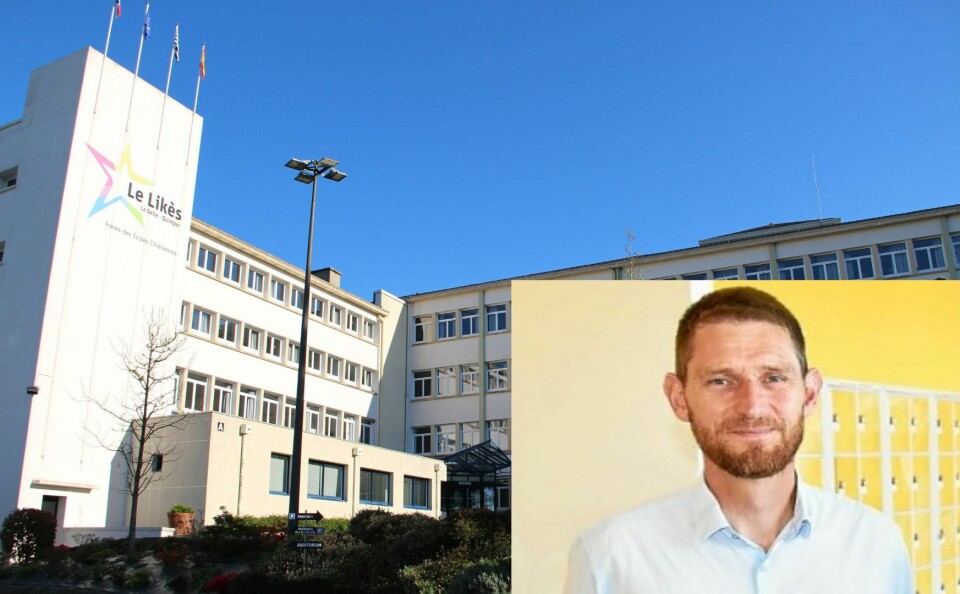-
La rentrée: 12 points to understand French schools
From food to bullying - some things may surprise you about the education system in France
-
The French school where children learn and study outside
We visit a ‘forest school’ where the focus is on an alternative education model
-
French school year 2025-2026: the changes that await pupils
Reforms on how French and mathematics are taught as well as expanded sexual education, stricter rules for mobile phones and more
Why are there so many private school pupils in Brittany?
Brittany’s long tradition of catholic private schools has roots in the historical resistance of Breton against France’s centralism and uniformity

Around 12 million pupils, aged from three to 18, went back to school this autumn - with the number split between public (around 80%) and private (20%) establishments, Ministry of Education data shows.
Many departments show private school figures of less than 5% (Creuse or Bas-Rhin) to 30% in Northern France and Normandy - but one part of France shows a completely different set of figures.
Brittany as well as neighbouring Mayenne, Maine-et-Loire and Vendée show figures above 30% with some departments in Brittany reaching 40 to 50% in 2022.
The Connexion spoke to Stéphane Gouraud, general secretary of the Comité académique de l’enseignement catholique (Caec) in Brittany - a network of 800 schools and 250,000 pupils in Brittany - to ask why.
Why Brittany scores high
“[It is because] Catholicism is strongly ingrained in Brittany, linked to the history of the region,” said Mr Gouraud.
The overall majority of private schools ’sous contrat’ (under contract) in Brittany are catholic. It means that pupils are taught religious culture and / or attend weekly Mass celebrations.
Public (state) schools in France follow an educational program set by the government, any fees are relatively low.
Private schools are either ‘sous contrat’, meaning they abide by certain state education guidance but can additionally implement their own rules. ‘Hors-contrat’ (no contract) means they have no obligation to follow the state’s guidelines.
The average price for schools ‘sous contrat’ (98% of private schools) is €650 per year, while a school ‘hors contrat’ ranges between €2000 and €3000.
Brittany aligned its schooling with religious beliefs when a new French policy on obligatory schooling was initiated around the late 19th century.
Some twenty years later when France moved from being a secular to a laicité-centred nation, many municipalities looked to preserve the catholic teaching method of tradition and trust for the church.
“Even though the religious dimension is not as important as in the past, that trust and attachment is part of Breton culture,” said Mr Gourand.
“That attachment became more cultural than spiritual over years,” he added.
How departments perform
The following figures were taken from calculations made by France Info, using sources from the Ministry of Education.
Finistère has 37.3% of primary school students enrolled in private schools and 43.8% in private secondary / high schools. Morbihan has higher figures with 49.3% in primary schools and 51.3% in secondary. Ille-et-Vilaine is between these with 36.7% and 40.1%.
Côtes-d’Armor has the lowest figures in Brittany with 30.9% of its students in primary school enrolled in private schools and 34.3% in secondary schools.
“There must have been a more aggressive policy against catholic teaching,” said Mr Gouraud commenting on the Côtes-d’Armor figures.
That resistance also carried through to language: prior to before World War Two pupils speaking Breton rather than French were punished.
“The more resistant vicars continued with prayers in the Breton language,” Mr Gouraud added as another example of Breton resistance against the State.
The appetite for private schools is seen in neighbouring departments also.
Vendée is the department with the highest figure in France: more than half of pupils are enrolled in private schools at both primary and secondary levels (50.5% primary, 51.7% secondary).
Maine-et-Loire shows 38.7% at primary level, 47% secondary.
Possible danger
Several studies have highlighted how private schooling is showing increasing inequality between rich and poor.
The French school system has been subjected to many reforms over the last decades.
The inclusive policies promoted by socialist governments to open access to more pupils has motivated the wealthiest families to look towards private schools, thought to be concerned about a possible ‘dumbing down effect’ elsewhere. Private schools are often more selective based on pupil grades.
The Ministry of education released the ‘indices de position sociale’ (social position index - IPS) of students from both public and private schools last October confirming some fears about a two-tier school system.
The IPS is calculated according to social-professional categories with results indicating that a higher IPS offers pupils a favourable learning environment, allowing them to realise their abilities.
Le Monde reported that of France’s top 10% of secondary schools with the highest IPS 60.9% are private schools (424 schools out of 696). Looking at the top 100 schools with the highest IPS 81 are private.
Only 3.3% of private schools are listed in the bottom 10% of schools with the lowest IPS.
Mr Gouraud said that Brittany figures do not match those of France as a whole, there is only a five-point difference in IPS between public and private schools.
“We do not seek to become an elitist teaching institution, we would lose our students and social utility. We want to be inclusive and accessible for everyone,” he said.
Read also
Seven facts about France's Mont-Saint-Michel abbey as it turns 1,000
Why 'cicada' song in Brittany is not what it seems (and sounds like)
























